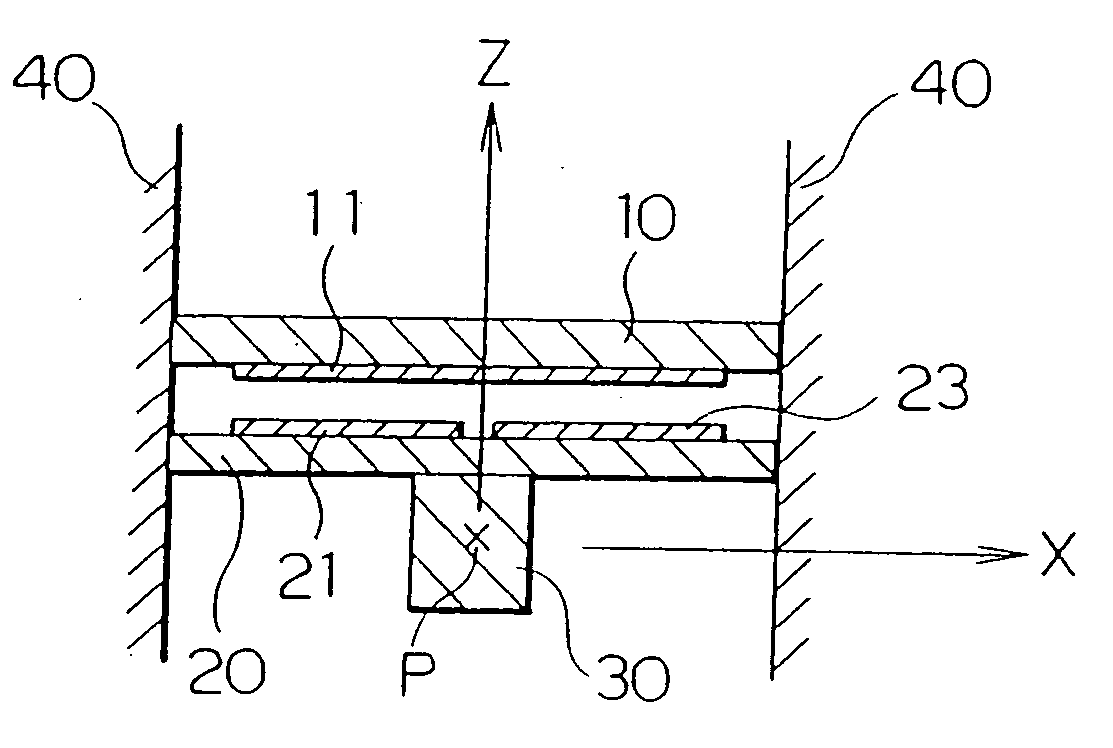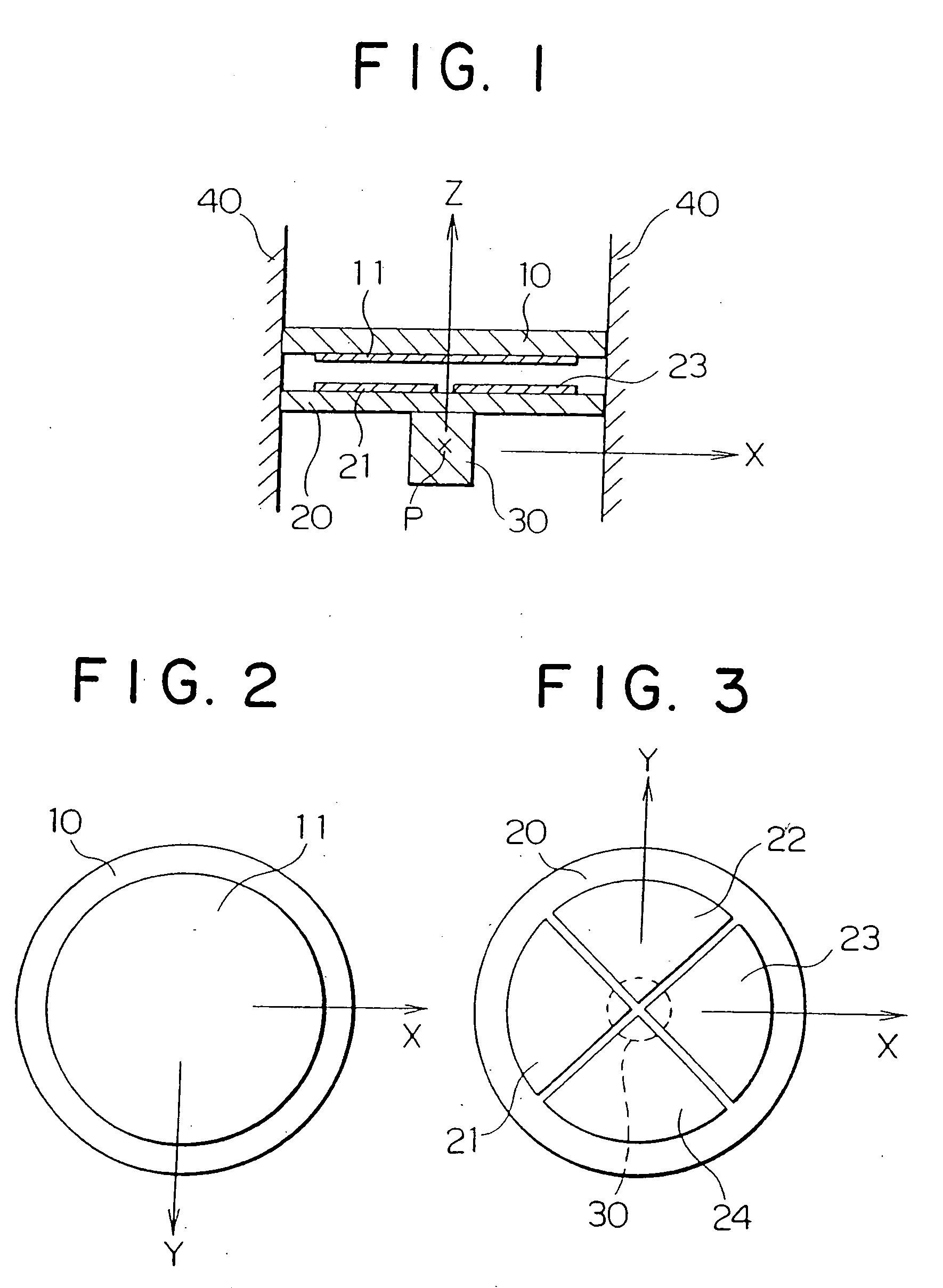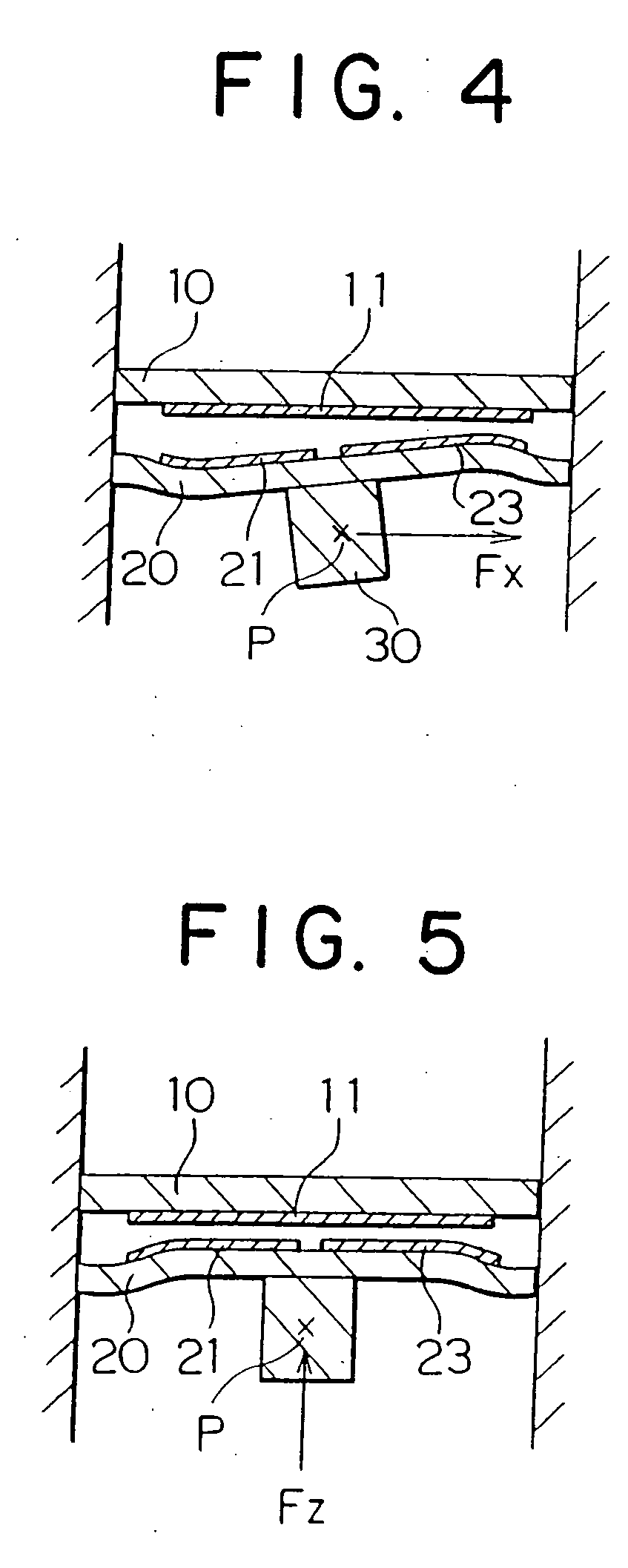Force detector and acceleration detector and method of manufacturing the same
a technology of force detector and acceleration detector, which is applied in the direction of acceleration measurement using interia forces, instruments, force/torque/work measurement, etc., can solve the problems of high manufacturing cost, high equipment cost, and high equipment cos
- Summary
- Abstract
- Description
- Claims
- Application Information
AI Technical Summary
Benefits of technology
Problems solved by technology
Method used
Image
Examples
embodiment
§1 Basic Embodiment
[0129]FIG. 1 is a side cross sectional view showing the structure of an acceleration detector according to a basic embodiment of this invention. This detector comprises, as the major component, a fixed substrate 10, a flexible substrate 20, a working body 30, and a detector casing 40. The bottom view of the fixed substrate 10 is shown in FIG. 2. The cross section cut along the X-axis of the fixed substrate 10 in FIG. 2 is shown in FIG. 1. The fixed substrate 10 is formed as a disk shaped substrate as shown, and is fixed at the peripheral portion thereof to the detector casing 40. On the lower surface thereof, a disk shaped fixed electrode 11 is similarly formed. On the other hand, the top view of the flexible substrate 20 is shown in FIG. 3. The cross section cut along the X-axis of the flexible substrate in FIG. 3 is shown in FIG. 1. The flexible substrate 20 is also formed as a disk shaped substrate as shown, and is fixed at the peripheral portion thereof to the...
5 embodiment
§5 Embodiment Having Test Function
[0156]Generally, in the case of mass producing any detectors to deliver them to the market, the test process is conducted prior to shipping. That is, the work for confirming whether or not the detector normarily carries out the detecting operation is conducted. Also in the previously described acceleration detector, it is preferable to carry out a test prior to shipping. In order to test the acceleration detector, an approach is generally employed to actually apply an acceleration thereto and confirm an electric signal outputted at this time. However, an equipment for producing an acceleration is required for such a test. As a result, the test system becomes large.
[0157]In the embodiment described below, test prior to shipping can be carried out without using such a large test system. FIG. 19 is a side cross sectional view showing the structure of an acceleration detector according to the embodiment having such a test function. This detector compris...
PUM
| Property | Measurement | Unit |
|---|---|---|
| temperature | aaaaa | aaaaa |
| capacitance | aaaaa | aaaaa |
| coulomb force | aaaaa | aaaaa |
Abstract
Description
Claims
Application Information
 Login to View More
Login to View More - R&D
- Intellectual Property
- Life Sciences
- Materials
- Tech Scout
- Unparalleled Data Quality
- Higher Quality Content
- 60% Fewer Hallucinations
Browse by: Latest US Patents, China's latest patents, Technical Efficacy Thesaurus, Application Domain, Technology Topic, Popular Technical Reports.
© 2025 PatSnap. All rights reserved.Legal|Privacy policy|Modern Slavery Act Transparency Statement|Sitemap|About US| Contact US: help@patsnap.com



